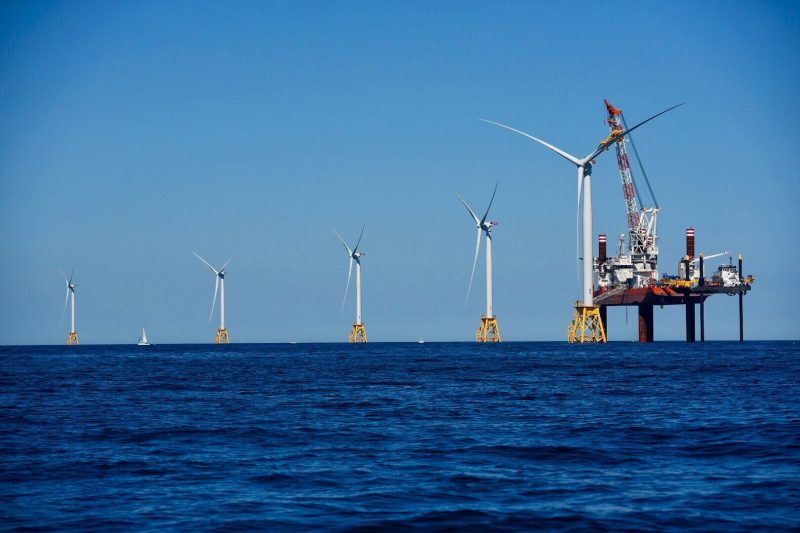latest
Massachusetts utilities regulators approve offshore wind contract termination

By Chris Lisinski
STATE HOUSE, BOSTON, AUG. 24, 2023…..State regulators have consented to a developer backing off its contracts for a 1,200-megawatt offshore wind installation, and introduced a procurement plan that weighs bidders’ past failures to complete projects without outright barring them from participation.
The Department of Public Utilities on Wednesday approved Commonwealth Wind’s proposal to pay $48 million in penalties and spike previously crafted power purchase agreements with utility companies, bringing to a close a monthslong saga and slashing by more than a third the amount of approved wind energy capacity in the state’s pipeline.
All three DPU commissioners — James Van Nostrand, Cecile Fraser and Staci Rubin — signed the “stamp approval” on the termination agreements Commonwealth Wind reached with Eversource, National Grid and Unitil. The regulators did not offer commentary explaining their decision.
Commonwealth Magazine first reported Wednesday about DPU’s decision.
The developer, a subsidiary of energy giant Avangrid, will pay $25.9 million to Eversource, $21.6 million to National Grid and $480,000 to back out of its contracts for the proposed offshore wind installation selected in 2021. Utilities plan to credit that money to their customers.
Avangrid higher-ups began publicly warning last fall that the project was no longer financially viable under the terms of the agreements it previously struck with the utilities, citing shifting economic currents including the Russian war in Ukraine and supply chain constraints.
DPU rejected Commonwealth Wind’s first attempt to back out in December and moved to uphold the contracts, prompting a court challenge from the company.
In recent months, though, the three utilities reached a deal to eliminate their agreements in exchange for termination payments, and the Department of Energy Resources (DOER)– which like DPU is part of the Executive Office of Energy and Environmental Affairs — signaled its support for freeing Commonwealth Wind from the deal.
Dissolving the power purchase agreements would “allow for the project to seek viability through other means while preventing protracted litigation unlikely to produce additional ratepayer benefits,” a DOER attorney wrote earlier this month.
Company officials have said they still remain committed to developing offshore wind for Massachusetts and intend to submit another bid in the next round of state procurement.
Their approach is a gamble, effectively betting that they will win selection from a narrow pool of competitors and secure a higher price for the revised project. State officials are eager to lock in new clean energy development to help Massachusetts meet its legal obligations, which likely plays into the calculus.
Developers of another wind project, SouthCoast Wind, have also said they want to terminate the contracts for their own 1,200 megawatt installation for similar financial reasons.
DPU’s approval of the Commonwealth Wind termination agreements drew criticism from the Massachusetts Fiscal Alliance, which described the move as “throwing Massachusetts ratepayers under the bus.”
“It’s as if you purchased a car from a dealership and a year later, they came to your house looking to take it back and resell it to you at a higher price because car prices had increased,” MassFiscal spokesperson Paul Craney said in a statement. “Any reasonable person would tell them to pound sand. The Healey administration is letting them take it and heading back to the dealer with their checkbook to pay a new and improved price.”
Including both Commonwealth Wind and SouthCoast Wind, Massachusetts has approved 3,200 megawatts of offshore wind power through three rounds of procurement. The state needs to secure 5,600 megawatts by 2027 to comply with its clean energy law.
The Healey administration is moving to begin accepting bids early next year on a fourth round, seeking between 400 megawatts and 3,600 megawatts of additional capacity.
On Wednesday, the same day it formally let Commonwealth Wind off the hook, DPU largely approved DOER’s proposed framework for how bidding will work.
Under the plan that won DPU backing, bidders will not be deemed ineligible if they — like Commonwealth Wind — terminated a previous offshore wind contract. The procurement process will, however, take into account a bidder’s “experience and track record” when grading each proposal.
The request for proposals also gives bidders a new tool to bulwark against potential cost increases. They can submit an “alternative indexed pricing” proposal, which could raise or lower a project cost based on macroeconomic factors.
An administration official said the DOER, electric distribution companies, the attorney general’s office and an independent evaluator will provide bidders with more information on how the indexed pricing will work.
Bids are due Jan. 31, 2024, and will be reviewed after that date, the official said. The plan anticipates the selection of projects to take place by June 12, 2024, long-term contracts to be executed by Aug. 14, 2024, and submission of those contracts for DPU approval by Sept. 18, 2024.
Deadlines could shift 60 days later if the U.S. Treasury Department releases any applicable tax guidance between Dec. 31, 2023, and Jan. 31, 2024, which the Healey administration said would give bidders time to incorporate any federal guidance and take advantage of ratepayer savings.
“We appreciate the DPU’s review of the timetable and method for the Commonwealth’s next offshore wind solicitation,” DOER Commissioner Elizabeth Mahony said in a statement. “We look forward to posting the RFP soon. This historic solicitation will continue to support our nation-leading offshore wind industry, create good-paying jobs, and generate clean, affordable energy for the benefit of Massachusetts residents and businesses.”
It’s been seven years since enactment of a law setting an offshore wind target for 2027, and Bay Staters are still waiting for the first turbines to begin spinning amid hiccups to some projects.
Construction is underway on the 806-megawatt Vineyard Wind installation about 15 miles south of Martha’s Vineyard, and project officials expect power generation to begin to begin in mid-October.
Vineyard Wind has long been described as the first utility-scale offshore wind project in the country. South Fork Wind, a project off Long Island that will provide wind power to homes in New York, also expects to be operational by the end of the year.
-

 Community7 years ago
Community7 years agoNational Shrine of La Salette Festival of Lights 2017 set to begin
-

 Community6 years ago
Community6 years agoMassachusetts State Police looking for good home for retired dogs
-

 Crime6 years ago
Crime6 years agoFall River ranked most dangerous city in Massachusetts according to report
-

 latest7 years ago
latest7 years agoDurfee student allegedly overdoses on marijuana
-

 Community6 years ago
Community6 years agoVideo of Fall River Police goes viral
-

 Causes6 years ago
Causes6 years agoMissing Fall River woman found deceased
-

 Crime7 years ago
Crime7 years agoFall River Police add names to most wanted list
-

 Causes6 years ago
Causes6 years agoFall River teenager reported missing has been found





MAGA👑KING
August 24, 2023 at 8:25 pm
They shut down fossil fuels now they will no longer deliver on the promised energy supplies for Massachusetts residents. It’s all part of the plan to have you sheep living like they do in third world s*** holes!
MAGAgirlygirl
August 25, 2023 at 11:46 am
Obama filled the skyline with these turbines that do not work. Just like his administration and this one now. Get rid of these clowns!
Wind turbines are like Biden. It stands, hardly moves, and is incapable of sustained movement.